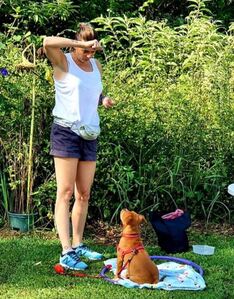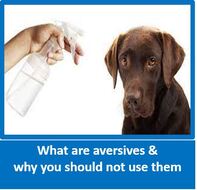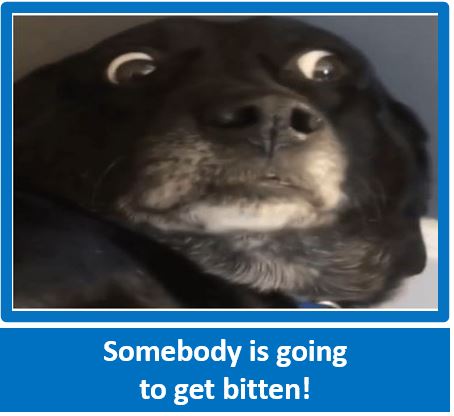
Please visit and LIKE our Facebook Page and share with family, friends and on your own Facebook page, and ask them to share further – it is only by working together and sharing knowledge and education that we can improve the lives of dogs and assist owners. We do not inundate you with posts – an average of 5 per week, and the odd Did You Know and General Post. Thank You!
Why you should teach your dog the Watch Me exercise.
Scotty Valadao - Friends of the Dog - Canine Behaviourist
Scotty Valadao - Friends of the Dog - Canine Behaviourist

Unless you have knowledge of dog body language and realize that one dog turning its head away from another dog, is what is called a Calming Signal, and aimed at calming the other dog down, you may not understand why the Watch is so important.
It is a brilliant exercise to bring in when a dog is nervous/fearful/reactive, towards either people or other dogs. It is actually an exercise that even dogs that do not have issues with people or other dogs should also learn – you never know when your dog may encounter a situation where it does feel nervous or threatened, and by simply bringing in the Watch, not only do you calm your dog down – you are calming the other dog, as your dog is turning away from it.
Additionally, you build trust between you and your dog, as you have realized he is not coping, and have used a coping mechanism, and your dog will learn to trust you even more.
The Watch can also be used for dogs that are chasers, by asking for a Watch, you are taking the dog’s attention away from what it wants to chase and buying yourself time to take further action.
If two dogs are meeting for the first time, and there is direct staring between them, the outlook of the meeting does not look good, and reactive behaviour could occur. If one dog was staring, and the other dog turned its head away (and normally other common body signals), the dog turning its head away is saying ‘I am not a threat’. What would happen next would depend on what the dog that was staring actually did.
Now, how can we implement this dog language? Very easily!
When first teaching the Watch, start off with a hungry dog and use kibble in the home environment. As you make the circumstances more difficult, especially when out for a walk, use higher quality treats, and those with a strong smell, such as liver bread, biltong (not too much, its salty), or even cheese – actually anything your dog loves. If your dog is not keen on kibble, and not a good eater, then start off with high value immediately.
Treats to be small, you want your dog to eat easily and quickly, as if you are in a situation where you need to say Watch several times in a row to keep your dog’s attention, you don’t want him to have a 5-minute chew on each piece.
Always start this in the home environment, and practice is essential. Once your dog has mastered in the home, then proceed to the garden and then on walks. Watch your dogs body language carefully, and if he does start to look at another dog, for example, you need to get the Watch in as quickly as possible. It is always a good idea while doing this, to lure his body slightly sideward and away from the perceived threat.
You will start off with the dog in the Sitting position, then graduate to him standing, and finally to being able to get a Watch while he is walking. Master each stage before going further.
It is a brilliant exercise to bring in when a dog is nervous/fearful/reactive, towards either people or other dogs. It is actually an exercise that even dogs that do not have issues with people or other dogs should also learn – you never know when your dog may encounter a situation where it does feel nervous or threatened, and by simply bringing in the Watch, not only do you calm your dog down – you are calming the other dog, as your dog is turning away from it.
Additionally, you build trust between you and your dog, as you have realized he is not coping, and have used a coping mechanism, and your dog will learn to trust you even more.
The Watch can also be used for dogs that are chasers, by asking for a Watch, you are taking the dog’s attention away from what it wants to chase and buying yourself time to take further action.
If two dogs are meeting for the first time, and there is direct staring between them, the outlook of the meeting does not look good, and reactive behaviour could occur. If one dog was staring, and the other dog turned its head away (and normally other common body signals), the dog turning its head away is saying ‘I am not a threat’. What would happen next would depend on what the dog that was staring actually did.
Now, how can we implement this dog language? Very easily!
When first teaching the Watch, start off with a hungry dog and use kibble in the home environment. As you make the circumstances more difficult, especially when out for a walk, use higher quality treats, and those with a strong smell, such as liver bread, biltong (not too much, its salty), or even cheese – actually anything your dog loves. If your dog is not keen on kibble, and not a good eater, then start off with high value immediately.
Treats to be small, you want your dog to eat easily and quickly, as if you are in a situation where you need to say Watch several times in a row to keep your dog’s attention, you don’t want him to have a 5-minute chew on each piece.
Always start this in the home environment, and practice is essential. Once your dog has mastered in the home, then proceed to the garden and then on walks. Watch your dogs body language carefully, and if he does start to look at another dog, for example, you need to get the Watch in as quickly as possible. It is always a good idea while doing this, to lure his body slightly sideward and away from the perceived threat.
You will start off with the dog in the Sitting position, then graduate to him standing, and finally to being able to get a Watch while he is walking. Master each stage before going further.
- Standing, hold the treat between your fingers, have your dog sitting in front of you, as in the picture. Let him smell the treat, and then raise it up to your forehead area (not too quickly, we want him to follow your hand), and at the same time get your dog's attention by using his name, then immediately after, say ‘Watch’, and we like to spread out the cue – W.a.t.ch. The second your dog looks at you, say ‘good watch’, and immediately offer him the treat. The dog's name is always used to ensure he looks at you, and use a happy appealing tone of voice.
We start off with only a second Watch, and very gradually, a few seconds at a time, build up the time period, but don’t go too fast, you really want to build up a solid foundation. You can either repeat the Watch cue several times, or just build up the time period using the Watch cue only once. This will depend on the individual dog and its level of fear towards perceived threats.
- If you have built up to a few seconds, and you see your dogs eyes or head starting to move to look at something else, quickly put your hand with the treat in front of his nose, and quickly lure him back to watching you – the second the does, reward immediately. You can build up the time period in this situation as well.




